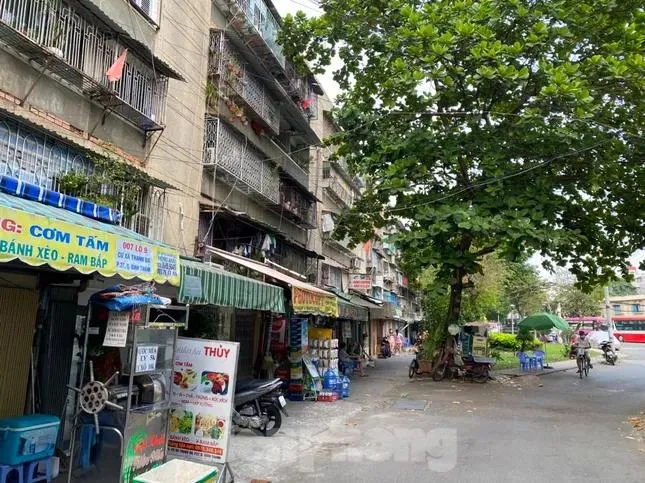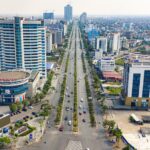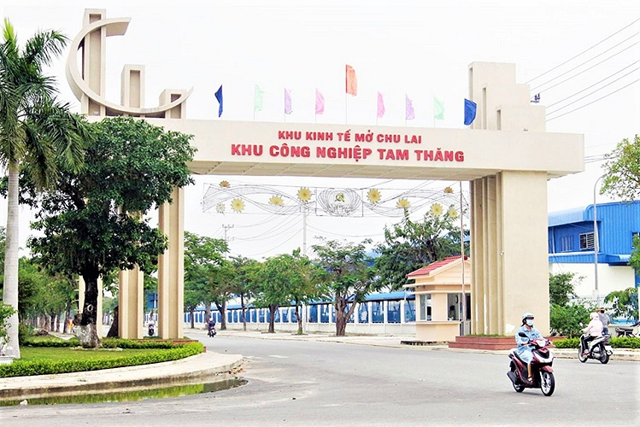Ho Chi Minh City People’s Committee has just issued a plan for implementing the project to renovate and rebuild old and dilapidated apartment buildings in the city. The project aims to address the severe deterioration in many residential areas constructed before 1994.
Accordingly, the implementation process is divided into seven steps, including arranging regular capital, establishing detailed planning for the project, conducting construction quality inspection, formulating renovation plans for each area, repairing apartments, establishing administrative procedures, and handling legal issues in long-delayed projects.
Notably, Ho Chi Minh City will conduct a bidding process to select new investors with sufficient qualifications to replace units that are no longer legally compliant or slow to implement, especially in projects carried out by state-owned enterprises or those that have been transferred.
According to the plan, Ho Chi Minh City will complete the construction of 16 heavily damaged and dangerous Grade D apartments. Specifically, the city will finish rebuilding seven Grade D apartments built before 1975 that have been inspected, relocated, and dismantled, and complete the construction of nine Grade D apartments also built before 1975, inspected but not yet relocated or only partially relocated. The plan also includes Grade D apartments that have newly emerged, suffered tilting or subsidence incidents, or fall under the cases specified in Clause 2, Article 59 of the 2023 Housing Law.

Ho Chi Minh City will complete the construction of 16 heavily damaged and dangerous Grade D apartments.
Additionally, Ho Chi Minh City will substantially complete the repair, upgrade, and reinforcement work for Grade B and C apartments constructed from 1975 to 1994, as well as Grade B and C apartments built before 1975.
By 2035, Ho Chi Minh City aims to finish renovating and rebuilding all apartments constructed before 1975. Simultaneously, the city will complete the renovation and new construction of Grade D apartments or those that have reached the end of their lifespan built from 1975 to 1994.
The Ho Chi Minh City People’s Committee directs the heads of departments, branches, and Chairpersons of People’s Committees of districts and counties to urgently implement the tasks according to the plan of the Department of Construction, ensuring progress, quality, and meeting the set requirements.
The Department of Construction is assigned to coordinate with the Department of Finance, the Department of Agriculture and Rural Development, and relevant districts and counties to regularly monitor, urge, inspect, and handle arising issues during the implementation process.
In cases where agencies and units undergo mergers, consolidations, dissolutions, or name changes due to organizational restructuring, the successor units will continue to perform the tasks under their new names.
During the implementation process, if any difficulties or problems arise requiring adjustments or additions, the departments, branches, and localities will proactively coordinate with the Department of Construction to synthesize and report to the Ho Chi Minh City People’s Committee for consideration and decision-making.
According to a report by the Department of Construction, Ho Chi Minh City currently has 474 apartments with 573 lots built before 1975 that are in severe deterioration and pose safety risks.
Quality inspections identified 16 Grade D apartments, 116 Grade C apartments, 332 Grade B apartments, and 12 apartments that have been dismantled or changed in use. Among these, five Grade D apartments in a state of severe disrepair have been entirely dismantled, and six dilapidated apartments have been partially dismantled.
For the group of apartments constructed between 1975 and 1994, there are currently 52 low-rise apartments (below eight floors) and 33 buildings with land areas below 1,000 square meters. The ownership and usage status of these apartments are complex.
When Will the Environmental Renovation Project on the North Bank of Kênh Đôi Canal Begin?
The project has disbursed compensation of approximately VND 466 billion to 104 households who have handed over their land.
“Infrastructure Leverage Enhances Sei Harmony Residential Area’s Value”
Sei Harmony is an exclusive, meticulously planned residential community in Binh Tan District, boasting a prime location in the heart of Saigon West. With a strong Japanese influence in its modern design and architecture, Sei Harmony sets a new standard for contemporary living in the area. The development benefits from a booming infrastructure and a diverse range of local amenities, offering residents a vibrant and convenient lifestyle with strong potential for sustainable capital growth.
The New Administrative Model: What’s Next for Thu Duc City as Vietnam Embarks on a Two-Tier Local Governance System from July 1, 2025?
“The vibrant city of Ho Chi Minh is gearing up for an exciting experiment. From June 12th to 30th, the metropolis will trial a two-tier local government model, marking a potential turning point in administrative efficiency. This bold initiative aims to streamline governance and bring about positive change for all its residents. Stay tuned as we witness this transformative journey unfold, shaping the future of one of Vietnam’s most dynamic cities.”
Great News for Hai Phong and Hai Duong Residents
The residents of Hai Phong are in for a treat as a slew of affordable housing projects are currently underway in the city. With these developments, homeownership dreams are about to become a reality for many.





















